A family story goes that my maternal grandfather from Rhode Island signed up for this program when he heard he could go build and repair roads almost 2,000 miles across the United States to Wyoming. He was excited to travel and see the country. But this project was in Wyoming, Rhode Island, which is a tiny village 30 miles from his hometown on Aquidneck Island. So he took a ferry to the mainland, but didn't even get out of the state (which, I might add for non-Americans, is the smallest state in the country, at 1,214 square miles- Wyoming, on the other hand, is the 10th largest state in the Union at 97,818 sqm.)
The Work Office show took place, fittingly, in an empty office building. Above is the entrance to the show after the Payday Party. A key component of the show was that we were hired for a week- our proposed projects had to be started and completed within a week's time-and we would be paid $23.50 for our work. This is what the pay rate was for a week's work as an artist hired by the WPA. The projects were varied, from a video of an artist paying people 50 cents for a joke, to documented conversations on the subways, embroidered flags, videos of repairs, and drawings of WPA supported art turned into postcards.
This is my piece above, Weaving the Grasses of America: part 1 Gowanus. I have been dreaming of weaving grasses from specific locations as a physical representation or map of a space for a long while now, and this is the first piece in the series! Gowanus is an industrial neighborhood in Brooklyn, home to both my studio and the Gowanus Canal, a Superfund site. In this atmosphere of warehouses and the toxic canal, it is surprising to see just how much vegetation can grow- there seemed to be grasses and weeds coming up from every crack in the sidewalk this summer. Each section of the grass weft is marked by a flipbook of my feet walking the sidewalk that the grasses came from. In this way, the walking feet mark out the path and the grasses were woven in order of collection. Each moment in the weaving represents an actual physical space (and time) that exists in the neighborhood- thus, a spatial and temporal map of Gowanus.
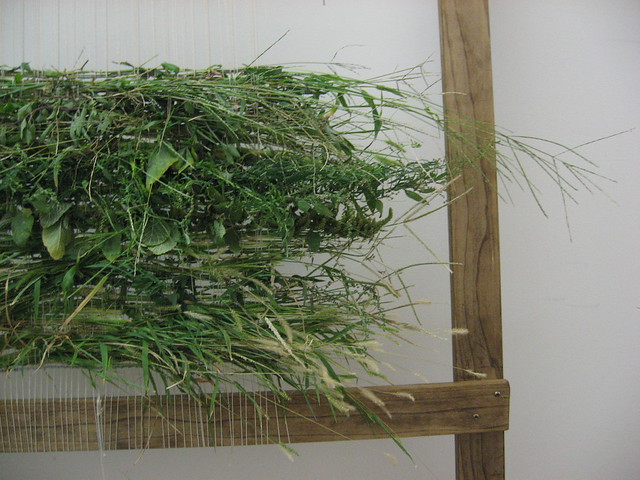
This section is the first two streets woven in- I wish there were a way that I could keep the grasses alive. This is my next hurdle to cross- preservation. If anyone out there has any words of wisdom or experience drying and preserving grasses, I'd love to hear them. The last three streets dried much better than the first two, as they were more stalks than true grass. This is something I will keep in mind for later pieces.
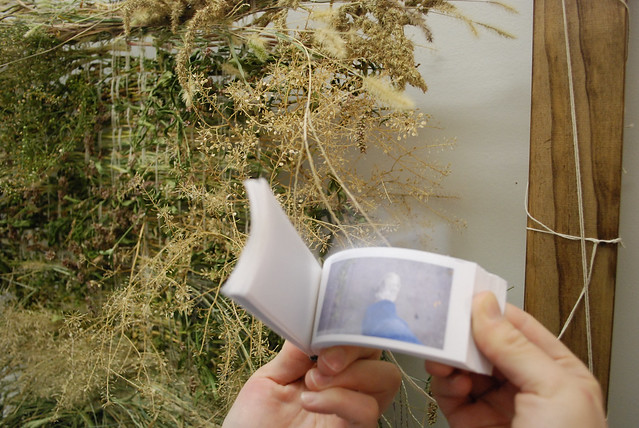
This is one of the flipbooks along with the fourth street seen behind it. I enjoy the flipbooks immensely- they are becoming a favorite way of dealing with movement and technology. They are handheld, tactile, and entirely self propelled ways of looking at video. This is just my kind of technology.

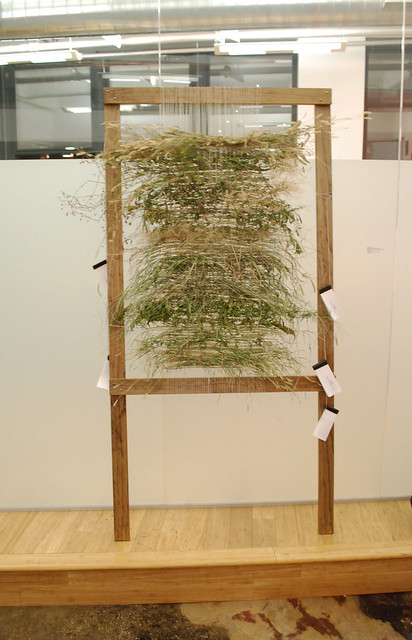
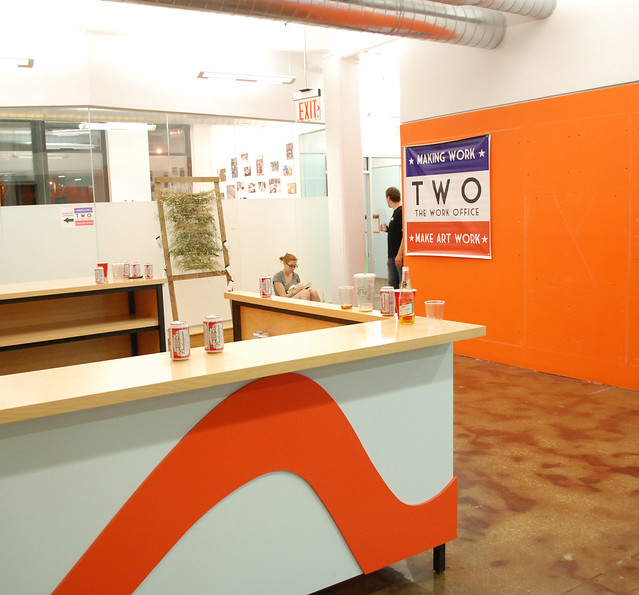
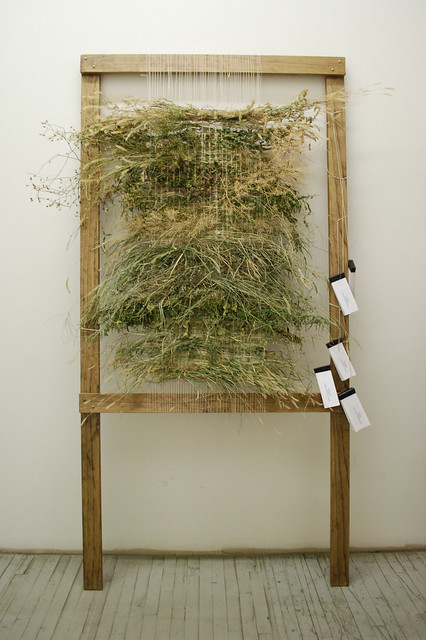
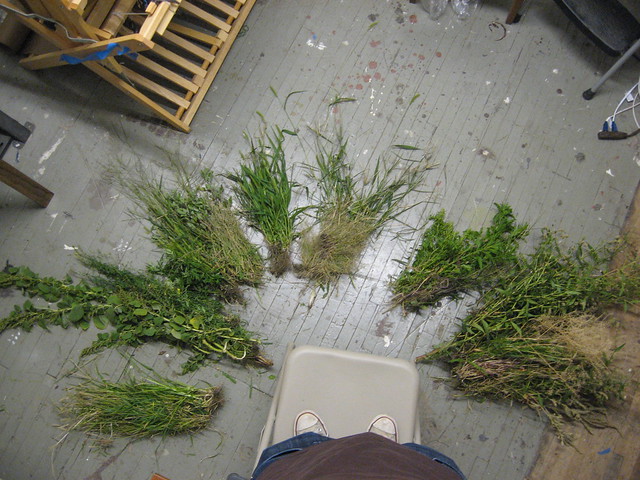
1 comment:
Hi! I just love this project of yours and I don't mind the grasses drying out, they add to the story behind it. Great work!
Post a Comment